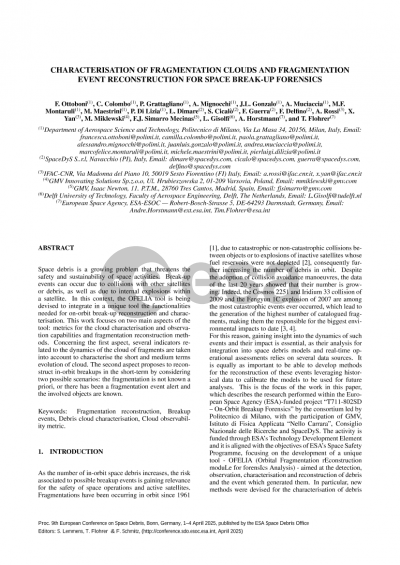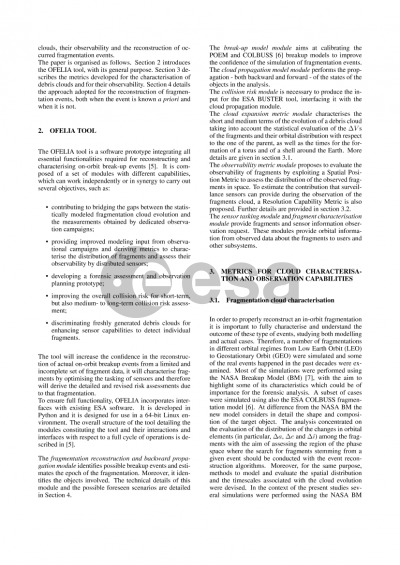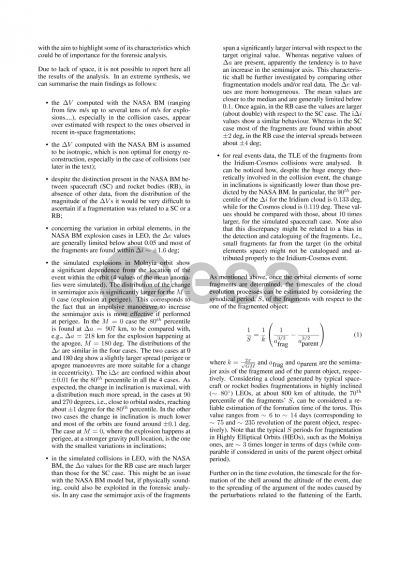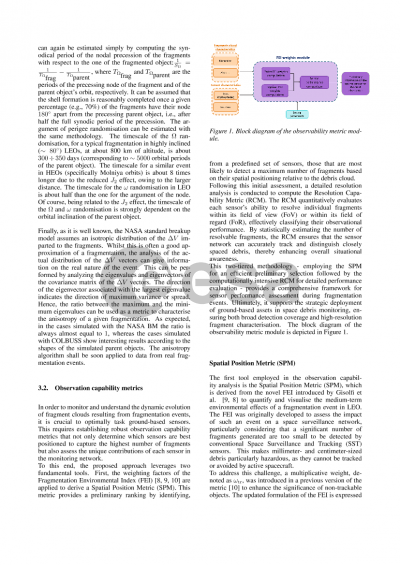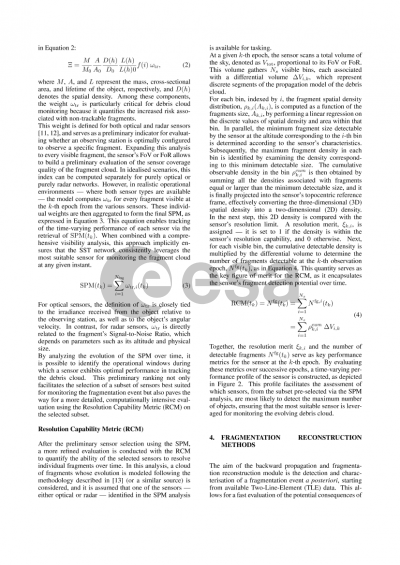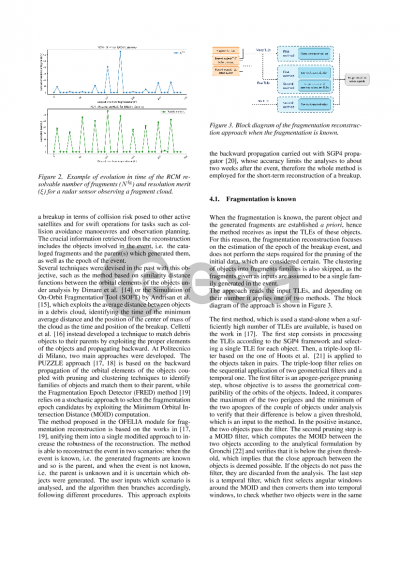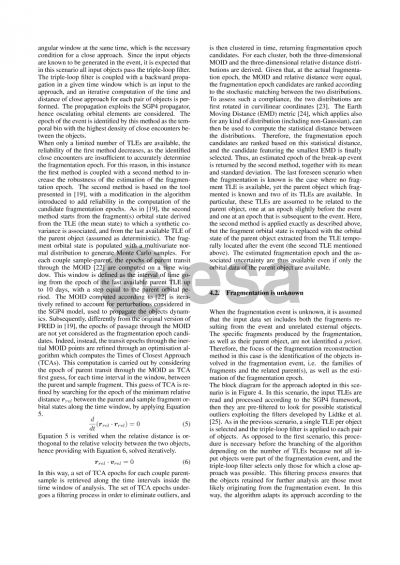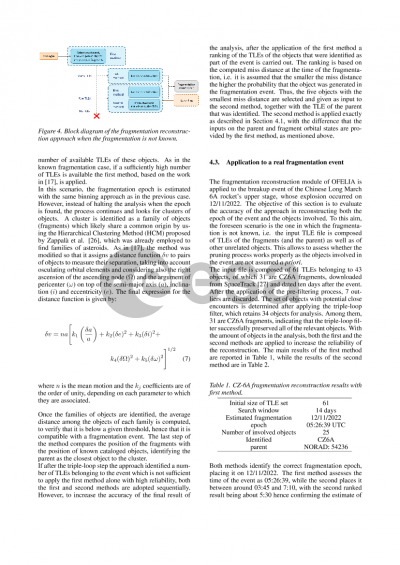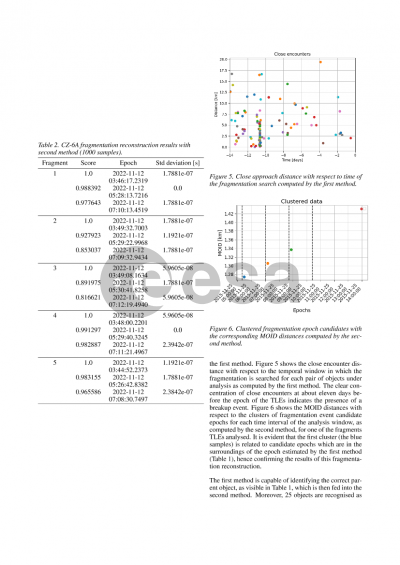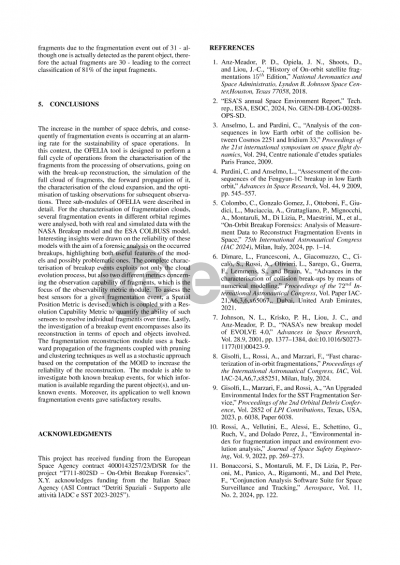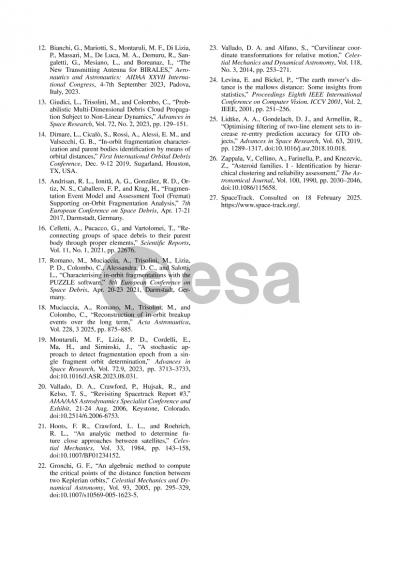Document details

Abstract
Space debris is a growing problem that threatens the safety and sustainability of space activities. Break-up events can occur due to collisions with other satellites or debris, as well as due to internal explosions within a satellite. In this context, the ESA-funded project “On-Orbit Break-up Forensics” provides innovative methodologies for the analysis and characterisation of space fragmentation events.
The OFELIA tool is being devised to integrate in a unique tool the functionalities needed for on-orbit break-up reconstruction and characterisation, starting from the characterisation of the fragments going on with the break-up reconstruction, the simulation of the cloud of fragments, its forward propagation, and the optimisation of tasking observations for subsequent observations. This paper will focus on two main aspects of the tool: metrics for the cloud characterisation and observation capabilities and the fragmentation reconstruction methods.
Concerning the first aspect, several indicators related to the dynamics of the cloud of fragments are taken into account to characterise the short and medium terms evolution of cloud.
These include (1) the statistical evaluation of the Delta Vs of the fragments and their relations with the distribution of the orbital elements of the fragments with respect to those of the parent(s); (2) the evaluation of the synodic periods of representative fragments in the torus and shell expansion phases; (3) a modified evaluation of the times for the shell formation;
The simulations are performed both with the NASA Breakup model and with the ESA COLBUSS fragmentation model. The observability of the fragments is also evaluated by means of a new Spatial Position Metric, devised from the Fragmentation Environmental Index (FEI) , to evaluate the distribution of the observed fragments in space, reflecting the coverage quality of optical or radar sensors. To assess the contribution that surveillance sensors can provide during the observation of the fragments cloud, a Resolution Capability Metric is also proposed, focusing on the ability of the observing station to identify individual fragments.
The second aspect proposes to reconstruct in-orbit breakups in the short-term by considering two possible scenarios: (1) the fragmentation is not known a priori, or (2) there has been a fragmentation event alert and the involved objects are known.
According to the case, a catalogue screening can be performed to assess if a close approach occurred. Then, the pipeline adapts to the number of available fragments TLEs for both scenarios. If a high number of TLEs is available, an approach based on pruning criteria and on clustering methods for orbit families identification is adopted to estimate the epoch of the breakup, the generated fragments and the parent(s). If instead only few TLEs of the objects are available, the previous approach is adopted in conjunction with a second approach, which is based on a stochastic computation of the MOID transit epochs to detect candidate fragmentation epochs, ranked according to the statistical similarity between the MOID and relative distance distributions. The combination of the two approaches allows to improve the robustness of the whole reconstruction. If the fragmentation is known a priori a third case is envisaged, where no fragment TLE is available and the second approach is employed to estimate the epoch and location of the event using the TLEs of the parent object(s).
Preview
